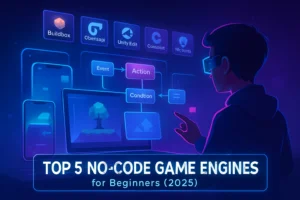
Where to watch movies and web series
Where to Watch Movies and Web Series in India (2025): The Ultimate Streaming Guide The way Indians consume entertainment has

Where to Watch Movies and Web Series in India (2025): The Ultimate Streaming Guide The way Indians consume entertainment has

Starting a company is exciting—but it is also one of the most challenging journeys you can ever take. Many new

1) First decisions: what to register and why For 95% of venture-style or scalable businesses, you’ll choose Private Limited Company

Introduction Industries form the backbone of the global economy, shaping nations, creating employment, and fueling innovation. From agriculture and manufacturing

Introduction Making a mobile game app as a beginner in 2025 has never been more accessible or exciting. With powerful

Introduction In 2025, choosing the right game engine is more critical than ever. With the rise of indie developers, educators,

Introduction Have you ever wondered why some games keep players hooked for hours while others lose their charm within minutes?

Introduction: Game Design Meets Education Game design has evolved into a powerful educational tool, combining creativity, logic, storytelling, and problem-solving

Introduction: A New Era of Game Creation Game development has never been more accessible. With the rise of no-code platforms,

Introduction: Why No-Code Game Engines Are Perfect for Beginners Game development has traditionally been seen as a domain for programmers

Introduction: The New Era of Game Creation In 2025, the game development landscape has shifted dramatically. With intuitive tools, free

Introduction We are standing at the edge of an era where artificial intelligence, climate innovation, decentralized systems, and bioengineering will